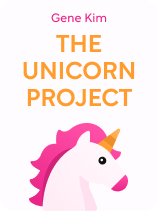

This article is an excerpt from the Shortform book guide to "The Unicorn Project" by Gene Kim. Shortform has the world's best summaries and analyses of books you should be reading.
Like this article? Sign up for a free trial here.
What are areas that will increase productivity in the workplace? How important is a manager’s encouragement at work?
The Unicorn Project by Gene Kim’s recipe for a productive workplace contains elements that are applicable in any organizational setting. These include a focus on the needs of the customer, an environment in which candor is rewarded, a culture dedicated to improvement, and management that enables employees to find a sense of flow and pleasure in their work.
Let’s dive into management practices that focus heavily on increasing productivity in the workplace.
1. Simplicity and Focus on the Customer
The first of Kim’s essential components for increasing productivity in the workplace can be summed up by the ancient words of wisdom, “Keep it simple, stupid.” Not only does this refer to small, tightly focused projects directed toward singular goals, but it also means always keeping an eye on the needs of the customer as a guiding star. As this guide steps beyond Kim’s narrative to explore the literature on simplicity and customer orientation, we find that while other authors agree that simplicity is an important goal, they suggest that complexity can’t be done away with, innovation should only be applied in moderation, and that simplicity is most important as it’s perceived by a product’s end user.
In Kim’s story, the Phoenix Project went off the rails when its original purpose—to provide an online ordering system—became lost under a growing mountain of added functionality and demands for new features from other business departments. This created a nonstop growth of scope and complexity that became so untenable the project couldn’t move forward. Kim argues that part of the job of project management should be to reduce complexity and not to let projects grow out of control. While that can be true of any business project, in the world of software, Kim recommends functional programming as a means to achieve simplicity in design.
Kim also reminds us that any project within a business has to serve the goals of the business, which inevitably amounts to meeting the needs of the customer. This serves as a test of any new project or added software feature—will it further the business and give customers what they want? In the name of simplicity, Kim recommends that any single project shouldn’t try to accomplish too much at once. Instead, a new, simple project should be created to meet new customer demands rather than adding to and complicating an existing project.
2. Candor and Safety
The next vital step toward productivity is to create an environment of intellectual and emotional safety and trust in the entire organization. Employees need this to feel safe and encouraged to give and receive honest feedback, and also to alert their teams and supervisors when problems arise. Here, we’ll turn to books by other management experts who agree with Kim about openness in the workplace, but they make it clear that creating a culture of safe, honest feedback requires leaders to demonstrate caring, trust, and vulnerability.
When errors were discovered during the Unicorn team’s first test run of promotional emails, the team held a meeting to diagnose and solve problems, not to find out who was “at fault.” In this kind of environment, the person responsible for an error is free to admit their mistakes without fear. Kim says that the purpose of these evaluative meetings shouldn’t be to punish errors but to find a way to prevent them from repeating. Ideally, admitting a mistake should be rewarded. When treated as learning experiences, mistakes can make the whole company stronger.
3. Nonstop Improvement
A fundamental that Kim carries over from his previous book The Phoenix Project is the need for continual improvement in a business. Rather than something that just happens on-the-fly, finding ways to improve how work is done must be part of each employee’s daily routine. In this section, we’ll look at the writings of leadership experts who highlight the importance of taking responsibility for the process, putting pressure on yourself and your organization, and making improvement part of your DNA.
Kim cites a policy instituted at Microsoft which states that if given a choice between developing a new software feature or working on a way to improve overall productivity, an employee should always choose improving productivity. This goes against the traditional management model in which procedures are dictated from on high while workers simply do as they’re told. Giving employees the freedom to explore new ways to improve the company itself requires managers and executives to change their mindset from being bosses to acting as guides and enabling their workers to make full use of their creative insights.
| The Pressure to Be Better In Extreme Ownership, Jocko Willink and Leif Babin go a step further than Kim by arguing that leaders enable continuous improvement by taking ownership of their workers’ mistakes. This doesn’t mean accepting blame, but rather that when someone on your team does something wrong, you should ask what you can do to make sure it doesn’t happen again. Accepting responsibility in this way links improving your team with improving yourself. This practice also means taking responsibility for your own mistakes, prioritizing constant improvement over salving your ego. Another truism implied by Kim’s story is that constant improvement requires constant pressure. In Relentless, Tim Grover frames this as an attitude necessary for individual greatness, but a similar outlook could be applied to an organization. The components of this mindset include not setting limits on what you can achieve, pressuring yourself to maintain high standards, and accepting that the process of improvement will involve some pain and discomfort along the way. In a survey of many real-world companies, Jim Collins and Jerry I. Porras confirm Kim’s assertion that successful businesses make constant improvement a part of their identity. In Built to Last, they challenge the myth that outstanding companies focus on beating their competitors. Instead, by insisting on constant self-improvement, they remove the “finish line” of defeating an opponent in favor of always striving to do better and planning for long-term growth as opposed to chasing after short-term gain. Collins and Porras suggest that internal competition and forced innovation can keep progress going like an endless marathon where the company stays on the track of improvement. |
4. Promoting the Flow
The final characteristic of a productive workplace is that it lets its employees achieve a state of flow in their work. “Flow” is the sensation of being in the zone, when creativity comes as naturally as breathing and workers derive intense satisfaction while accomplishing the goals they’re working toward. In this final section, we’ll hear from psychologists and business professionals who agree that reaching a state of flow improves mental health and productivity, though it requires making deliberate choices to limit distractions and energize your mind.
In the example of software developers, Kim writes that a sense of flow can be reached when you’re able to write code, run it immediately, fix any problems, and know all the while that the work you’re doing is toward a tangible, positive outcome. When projects are simple and customer-focused, when you feel safe to take risks and learn from mistakes, and when nonstop improvement is the underlying drive, a state of flow can be the natural outcome of a business culture that’s optimized for success.
| Deep Work and Distractions The state of creativity Kim writes about was first identified in Flow by psychologist Mihaly Csikszentmihalyi. While tricky to define, a flow state can be characterized as an optimal experience in which your attention and your energy are focused as you become completely immersed in what you’re doing. Enabling team members to reach flow states in their work can make them more self-confident and improve their sense of well-being. People are more likely to achieve a feeling of flow on the job if their work is challenging and engages multiple skills. In Deep Work, Cal Newport presents a closer look at creative flow states specifically in the workplace, emphasizing that your ability to concentrate on and perform “deep work” determines how much you’ll be able to thrive in the information economy. A task qualifies as deep work if it’s important, difficult, and fulfilling. Newport gives specific advice for individuals to block out time for deep work, but a business can facilitate deep work as a priority by creating an environment that supports concentration and reduces distractions. Distractions are the bane of staying in the flow. In Make Time, Jake Knapp and John Zeratsky give practical tips for maintaining your focus and reducing interruptions, all of which could be made easier if embedded into a company’s culture. These include blocking off uninterrupted time to work on important projects, limiting your amount of email use, and being deliberate about how you use technology instead of letting your computer and phone dictate what you do from moment to moment. All of these steps can help team members maintain their focus and reach a state of flow, resulting in an overall increase in productivity. |

———End of Preview———
Like what you just read? Read the rest of the world's best book summary and analysis of Gene Kim's "The Unicorn Project" at Shortform.
Here's what you'll find in our full The Unicorn Project summary:
- Why the work of IT services must align with a company's goals
- How an IT department can turn itself around after failure
- The three pillars of IT management: workflow, feedback, and constant improvement







If you want to increase work productivity, you might want to consider implementing some productivity tools. Kanbantool.com might be good to start because it’s easy to use and can serve multiple purposes. You can use it to manage your team, but your team can also use it to manage their time and tasks. And it has a time-tracker. You can try all of its functionalities during a free trial period.